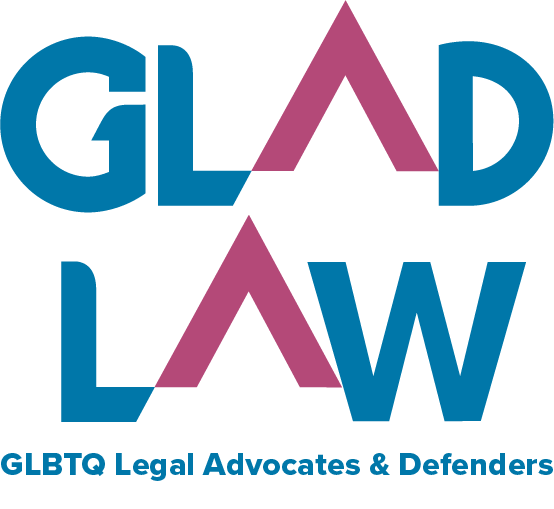
Blog
June 26, 2025
Why Did Marriage Become a Legal Fight?
Why did it take a U.S. Supreme Court ruling in 2015 for same-sex couples to be able to marry nationwide? After all, deciding whether and whom to marry is an intensely personal decision, a religious exercise for many, and is associated with a life partnership of mutual responsibility, love, care, and commitment. Our traditions and laws allow individuals, not the government, to make that choice for themselves.
The short answer is that States control marriage laws and many states implicitly or explicitly barred same-sex couples from marrying. Those laws collided with the human aspirations and families of LGBTQ+ people who, like generations of people before them, consented to join in marriage with the person of their choice, benefit from marriage’s protections, and take responsibility for one another.
So while states regulate marriage, they must do so in accord with the U.S. Constitution. In earlier cases about or related to marriage, the Supreme Court had already recognized it as “the most important relation in life,” “the foundation of family and … society,” one of “our basic liberties” and “one of the vital personal rights essential to the orderly pursuit of happiness.”
In Turner v. Safley, a 1987 case about the right of incarcerated people to marry, the Court noted that many elements of marriage remain even with the limitations of prison life, including “expression of personal dedication,” “spiritual significance,” “expectations” of intimacy, and its function as a “precondition for government benefits, property rights, … and less tangible rights.”
Marriage provides profound protection for a couple and their family, starting with legal and societal recognition that eases their way in the world. The rights and responsibilities associated with marriage – hundreds at the state level and over 1000 at the federal level – extend to legal parentage to the couple’s children, workplace and retirement protections, joint ownership of property, family insurance policies and tax rules and filings, as well as inheritance, decision-making, and other protections on a spouse’s disability or death .
In November 2003 the Massachusetts Supreme Judicial Court case of Goodridge v. MA Department of Public Health broke the historical barrier and for the first time in the United States, a high court ruled that same-sex couples have a right to marry under the state constitution’s equality and liberty guarantees. In its first paragraph the Court declared marriage “a vital social institution” that “nurtures love and mutual support” and “brings stability to our society.” It also called attention to the benefits and responsibilities of marriage: “For those who choose to marry, and for their children, marriage provides an abundance of legal, financial and social benefits,” and in return “imposes weighty legal, financial and social obligations.”
Rooted in principles of equality, liberty, association, and intimate choice, the U.S. Supreme Court has declared multiple times that “the right to marry is of fundamental importance for all individuals.” It’s done so when state laws barred people from marrying because they had outstanding child support obligations, were in prison, sought to marry a person of another race or sought to marry a person of the same sex. Marriage has always been a right, even as a common law right before the U.S. was a country, and the Court has rejected state laws limiting marriage for classes of people.
Same-sex couples are hardly the first to confront laws colliding with our constitutional guarantees of equal protection of the laws, due process of law and others. Throughout U.S. history, state restrictions once barred some people from marrying on racial, ethnic, or health-related grounds that we now recognize as discriminatory. In the foundational (and best-named) case of Loving v. Virginia, a state trial judge sentenced Richard Loving and Mildred Jeter to jail for violating Virginia’s laws barring interracial marriage unless they left the State. They left Virginia and filed suit. The U.S. Supreme Court unanimously ruled in 1967 on equal protection grounds that states cannot restrict marriage based on the race of the partners, and the “the freedom to marry” is part of liberty and the vital personal rights of all Americans. Loving’s dual frameworks of equal protection and due process for evaluating marriage restrictions has continued to this day.
The Obergefell court, looking to both the “essential” marriage right and equal protection, inaugurated nationwide marriage equality on June 26, 2015. Same sex couples could marry in every state on the same terms and conditions as all others, and they would be accorded the same “constellation of benefits” afforded to other married couples.
In the 2017 Pavan v. Smith case, the Supreme Court reinforced the responsibilities of states for equal treatment, and rejected a state court’s refusal to list both parents on a child’s birth certificate.
Marriage equality touches and benefits entire communities across the country. One way we can protect equality is through conversations about why marriage matters to us and to others.
Whether you are part of a married couple, have LGBTQ+ parents, are a sibling, parent, grandparent, family member, friend, co-worker, or neighbor, we’d love to know about your experience. Share your story today.
